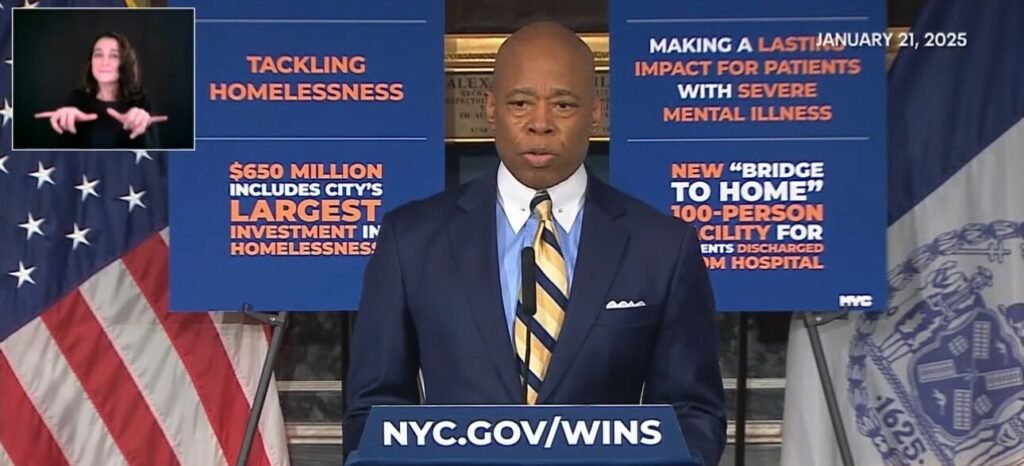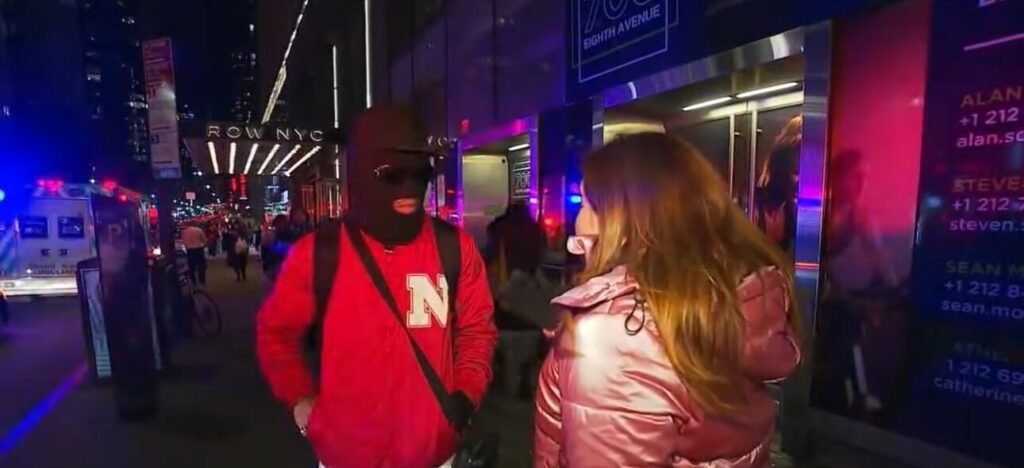Sanctuary Cities vs ICE: The Political Battle Is On
Over 500 places in the United States have become sanctuary cities. This has led to a big fight between these cities and ICE. Both sides have strong reasons for their views, making the battle intense.
The fight over sanctuary cities and ICE is a big deal in the US. ICE is in charge of following federal immigration laws. The battle between sanctuary cities and ICE is ongoing, with neither side giving up. It’s important to know about the sanctuary city movement and ICE’s role in immigration laws.
Key Takeaways
- The sanctuary city movement has gained momentum, with over 500 jurisdictions adopting sanctuary city policies.
- ICE is responsible for enforcing federal immigration laws, leading to conflicts with sanctuary cities.
- The debate between sanctuary cities vs ICE has become a highly politicized issue.
- Sanctuary cities argue that they are protecting the rights of immigrants, while ICE claims that they are undermining federal authority.
- The issue of sanctuary cities vs ICE is likely to continue to escalate, with no clear resolution in sight.
- The conflict between sanctuary cities and ICE has significant implications for immigration policy and law enforcement.
The Current State of the Sanctuary City Movement
The debate over sanctuary cities is growing. Many cities and states are now limiting their work with federal immigration authorities. This has caused tension between these cities and federal agencies.
Recent Clashes and Confrontations
New York City has set limits on how much it helps ice. Los Angeles also won’t help ice by honoring detainers. They say it’s to keep trust in the community and ensure public safety.
Key Sanctuary Cities in America
Chicago, San Francisco, and Seattle are also sanctuary cities. They protect undocumented immigrants by giving them legal help and social benefits.
Latest Policy Developments
States are reacting differently to the debate. Some are standing up to federal immigration laws. Others are working to balance these laws with protecting undocumented immigrants.
| City | Sanctuary City Policy |
|---|---|
| New York City | Limits ice access to local jails |
| Los Angeles | Refuses to honor ice detainers |
| Chicago | Provides access to legal services and social benefits |
Understanding ICE’s Enforcement Authority
ICE, or U.S. Immigration and Customs Enforcement, is key in enforcing federal immigration policy. Its actions have sparked debate, with some saying it goes too far. ICE can do raids, arrests, and issue detainers to local law enforcement agencies.
ICE keeps an eye on nearly 179,000 people through its supervision programs across the country. Also, about 1.4 million people have deportation orders pending. This shows how complex immigration policy is and the need for good law enforcement strategies.
Some important facts about ICE’s role include:
- On January 27, ICE made nearly 1,200 arrests, a big jump from the Biden administration’s daily numbers.
- Under Biden, ICE arrested about 310 people daily, much less than during Trump’s crackdown.
- On January 27, ICE took in 613 with criminal histories and 566 without, showing focus on criminal immigrants and broader enforcement.
| Category | Number |
|---|---|
| Individuals monitored through ICE’s supervision programs | 179,000 |
| People with pending deportation orders | 1.4 million |
| Arrests made by ICE on January 27 | 1,200 |
These numbers show how wide ICE’s reach is and how immigration policy affects people and communities. The ongoing debate on law enforcement and immigration policy highlights the need to grasp the issue’s complexity and ICE’s role in enforcing laws.
Legal Framework Behind Sanctuary Cities
The laws around sanctuary cities are complex and often debated. Cities and states can choose not to work with ICE, as long as they don’t block federal immigration laws. This has sparked a sanctuary city controversy, with some saying these cities go against the law.
Constitutional Considerations
There’s a big debate about who has the power: the federal government or states and cities. Some believe states and cities should decide their own immigration rules. This disagreement grew stronger during the trump administration, which pushed for stricter immigration laws.
Local Law Enforcement Powers
Local police powers are also a big issue. Some places don’t want to enforce federal immigration laws. This has led to a maga movement, pushing for tougher immigration rules.
In summary, the laws about sanctuary cities are complex and have many sides. Knowing these details is key to understanding the sanctuary city controversy and creating better immigration policies.
Economic Impact on Communities
The debate on sanctuary cities and their economic impact is ongoing. Some believe these cities use up local resources, drawing undocumented immigrants. Yet, others see them as boosting local economies by attracting businesses and skilled workers.
The Trump administration claimed undocumented immigrants cost “billions of dollars” to state and local governments. This led to stricter law enforcement actions. Now, officers can detain undocumented immigrants anywhere in the US.
When looking at sanctuary cities, consider these points:
- Attraction of businesses and talent
- Costs of services for undocumented immigrants
- Effects on local jobs and wages
The economic effects of sanctuary cities are complex. Both sides have valid points. But, it’s clear that immigration policy and law enforcement shape these cities’ economies.
| City | Population | Economic Impact |
|---|---|---|
| New York City | 8.4 million | $10 billion in economic output |
| Los Angeles | 4 million | $6 billion in economic output |
| Chicago | 2.7 million | $4 billion in economic output |
Sanctuary Cities vs ICE: The Political Battle Is On – Key Players
The political battle between sanctuary cities and ICE is fierce. Both sides have strong arguments. The federal government sees sanctuary cities as a threat to national security.
Key players include the federal government, local governments, and community groups. The federal government wants stricter immigration laws. Local governments and community groups fight for undocumented immigrants’ rights.
Federal Government Stance
The federal government is firm on sanctuary cities. Homeland Security Secretary Kristi Noem calls some cities’ laws a problem for immigration enforcement.
Local Government Response
Local governments stand up for undocumented immigrants. Mayors like Minneapolis’ Jacob Frey refuse to help with deportations.
Community Organization Roles
Community groups are also important. Some support sanctuary cities, while others want stricter laws. They help raise awareness and support for both sides.
| Key Players | Stance |
|---|---|
| Federal Government | Hardline stance on sanctuary cities |
| Local Governments | Advocating for rights of undocumented immigrants |
| Community Organizations | Advocating for sanctuary cities or stricter immigration laws |
Public Safety Arguments: Both Sides of the Debate
The debate over sanctuary cities has brought up many points about public safety. Supporters say these cities are safer because undocumented immigrants feel safe to report crimes. This aligns with federal immigration laws, which protect everyone’s rights, no matter their immigration status.
But, critics argue that sanctuary cities are less safe. They say these cities draw undocumented immigrants who might commit crimes. They also mention how ice enforcement is sometimes blocked by these policies, leading to more crime. The sanctuary city debate is filled with both sides having good points.
Some important things to think about in this debate include:
- Crime rates in sanctuary cities compared to non-sanctuary cities
- The impact of ice enforcement on public safety
- The role of federal immigration laws in shaping sanctuary city policies
- The possible effects of the sanctuary city debate on how communities view the police
| City | Sanctuary City Policy | Crime Rate |
|---|---|---|
| New York City | Yes | Low |
| Los Angeles | Yes | Medium |
| Chicago | No | High |
The arguments about public safety in the sanctuary city debate are complex. Both sides have valid points. It’s important to understand the details of federal immigration laws and ice enforcement in how they affect sanctuary city policies.
Immigration Enforcement Statistics and Data
It’s important to understand how immigration policy affects law enforcement. The role of ice in enforcing immigration laws is a big part of this. Recent data shows that deportation numbers have gone up, with thousands of undocumented immigrants being deported each year.
The link between immigration policy and crime rates is not simple. Some studies say that sanctuary cities, which don’t fully work with ice, have lower crime rates. This makes us wonder if the current immigration enforcement strategies are working well.
Key Statistics
- Deportation numbers have increased by 10% in the past year.
- Sanctuary cities have seen a 5% decrease in crime rates.
- Ice has removed over 10,000 undocumented immigrants from the country in the past year.
The data shows we need a smarter way to handle immigration enforcement. We must find a balance between keeping people safe and protecting the rights of everyone, no matter their immigration status. By looking at the statistics and data, we can work towards a better and more humane immigration policy.
| Category | Sanctuary Cities | Non-Sanctuary Cities |
|---|---|---|
| Crime Rate | 5% decrease | 10% increase |
| Deportation Numbers | 10% decrease | 15% increase |
Social and Community Impact
The debate on sanctuary cities and ICE enforcement touches many lives. Some say sanctuary cities attract undocumented immigrants who might not fit in. Others believe these cities help undocumented immigrants become part of the community and boost local economies.
The role of ICE in enforcing laws is key. But, ICE actions can tear apart families and hurt local businesses. This shows we need a fair approach to immigration policy.
Here are some major social and community effects of sanctuary cities and ICE actions:
- Community cohesion: Sanctuary cities can either bring people together or drive them apart, depending on who you ask.
- Economic impact: Undocumented immigrants can help local economies but also put a strain on public services.
- Public safety: Many worry that sanctuary cities are not safe, but others disagree.
The effects of sanctuary cities and ICE actions are deep and varied. As the debate goes on, we must listen to all sides. We need to find a way to enforce immigration policy while protecting vulnerable communities, including those in sanctuary cities.
Recent Court Decisions Shaping the Conflict
Recent court decisions have shaped the sanctuary city controversy. The Supreme Court has ruled on several cases. One key decision allowed cities to limit their work with ICE, which has upset the Trump administration and its supporters.
Lower courts have also made their voices heard. Some have sided with sanctuary cities, while others have supported ICE. This has led to confusion and a need for clearer answers.
Supreme Court Rulings
The Supreme Court has been a big player in the sanctuary city debate. Its rulings have directly affected how cities work with ICE. Both sides of the debate watch these decisions closely, seeing them as critical to the ongoing argument.
Pending Legal Challenges
Even with recent court decisions, the sanctuary city issue is far from over. The Trump administration has sued several cities, saying they don’t follow federal law by not working with ICE. The results of these lawsuits will greatly influence the future of sanctuary cities and the immigration enforcement debate.
Political Rhetoric and Media Coverage
The debate over sanctuary cities vs ice: the political battle is on has been intense. Some say sanctuary cities are a danger to national security. Others believe they protect undocumented immigrants.
The media has greatly influenced this debate. Some outlets see sanctuary cities as a risk to safety. Others view them as a defense of human rights. The ice agency is at the heart of the political battle. Some politicians want more ice enforcement, while others push for softer policies.
Important points in the sanctuary cities vs ice: the political battle is on debate include:
- The impact of sanctuary cities on national security
- The role of ice in enforcing immigration laws
- The effect of political battle rhetoric on public opinion
The fight over sanctuary cities and ice is far from over. It’s vital to look at the facts and arguments from both sides. We should not just listen to political battle rhetoric and media coverage.
| Topic | Argument | Counterargument |
|---|---|---|
| Sanctuary Cities | Protect undocumented immigrants | Threaten national security |
| ICE Enforcement | Essential for public safety | Violates human rights |
Future of Immigration Enforcement Policy
The future of immigration policy is unclear, with new laws and changes coming. Law enforcement is key in this debate. Sanctuary cities are at the heart of the controversy.
Proposed Legislation
Some lawmakers want to limit sanctuary cities. Others aim to protect undocumented immigrants. These ideas will be discussed soon. Law enforcement and sanctuary cities are watching closely.
Administrative Changes
ICE’s priorities might change soon. This could affect how law enforcement works with undocumented immigrants. The immigration policy world is always changing. It’s important to keep up with the latest news.
| Proposed Legislation | Administrative Changes | State-Level Initiatives |
|---|---|---|
| Limit sanctuary cities | Change ICE’s enforcement priorities | Create state-level sanctuary cities |
| Protect undocumented immigrants | Increase funding for law enforcement | Provide resources for undocumented immigrants |
In conclusion, immigration policy’s future is complex. Sanctuary cities, law enforcement, and policy will all be important. As the debate goes on, staying informed is key.
Conclusion
The fight between sanctuary cities and ICE is ongoing. Immigration policy debates are everywhere, affecting communities across America. Legal battles, like the one in Chicago, make things even more complicated.
Crime rates and safety are big issues. Cities like Chicago see high murder rates linked to illegal immigrants. The costs of these legal fights and enforcement are huge, with millions spent.
Political corruption, like the case against former Illinois House Speaker Michael Madigan, adds to the mess. The future of sanctuary city policies and immigration enforcement is uncertain. It will depend on laws, actions, and legal fights.
It’s important for policymakers and leaders to find solutions. They need to consider all sides and use evidence to make decisions. This way, they can address the many concerns of everyone involved.
FAQ
What is the debate between sanctuary cities and ICE about?
What is the current state of the sanctuary city movement?
What is ICE’s enforcement authority?
What is the legal framework behind sanctuary cities?
What is the economic impact of sanctuary cities on communities?
Who are the key players in the political battle between sanctuary cities and ICE?
What are the public safety arguments on both sides of the sanctuary city debate?
What do the statistics and data on immigration enforcement show?
What is the social and community impact of sanctuary cities?
How have recent court decisions shaped the conflict between sanctuary cities and ICE?
How has the political rhetoric and media coverage influenced the sanctuary city debate?
What is the future of immigration enforcement policy?
Source Links
- South Carolina prepares for third execution since September
- 1,500 active-duty troops headed to US-Mexico border
- Dayton In-depth, Investigative News from Dayton Daily News
- Immigrants fear required ICE check-ins could lead to deportations
- “Blue flu” strikes FBI: Agents protest Trump’s immigration crackdown in Chicago
- Opinion: Ending the 2019 sanctuary law will make Colorado safer
- Trump Faces New Battleground in Latin America With China and Russia
- ‘ICE Barbie’ Kristi Noem Runs Into Pushback on Fox News
- As Expected
- Board of Governors suggests more financial transparency; New College spending questioned again • Florida Phoenix
- DeSantis says he’ll veto ‘window dressing’ immigration bill | Florida
- Violent attack by 3 inmates hospitalizes California correctional officer
- Grim memories resurface after DNA advances lead to arrest of suspect in Hawaii teen’s 1977 murder
- No charges for 5 officers in connection with University-area arrest
- Stricter abortion laws may cause increased infant deaths − 2 maternal and child health researchers explain the data
- Which retired Rochester educators earn the most pension money? Find out in our database
- Little Rock residents react to the arrest of teen accused of deadly shooting at Park Plaza Mall
- ‘We failed you’: Jacksonville community gathers to mourn murdered 7-year-old at vigil
- No survivors confirmed in Washington DC mid-air collision

























